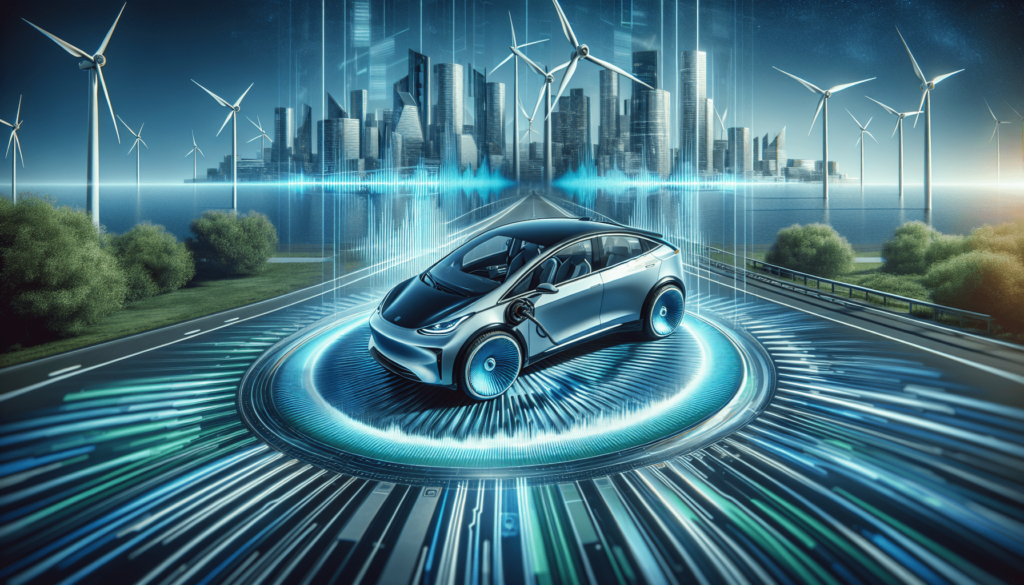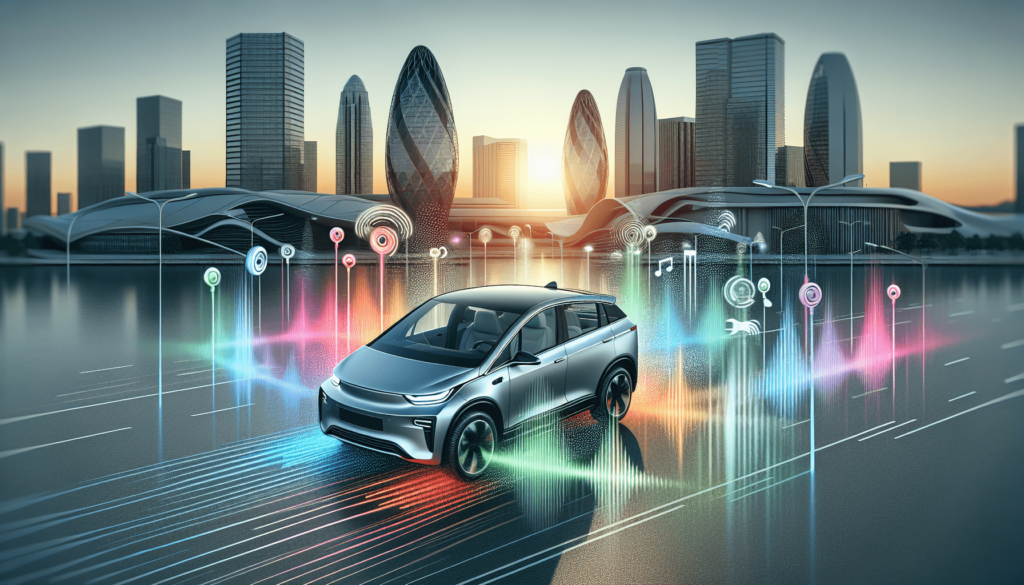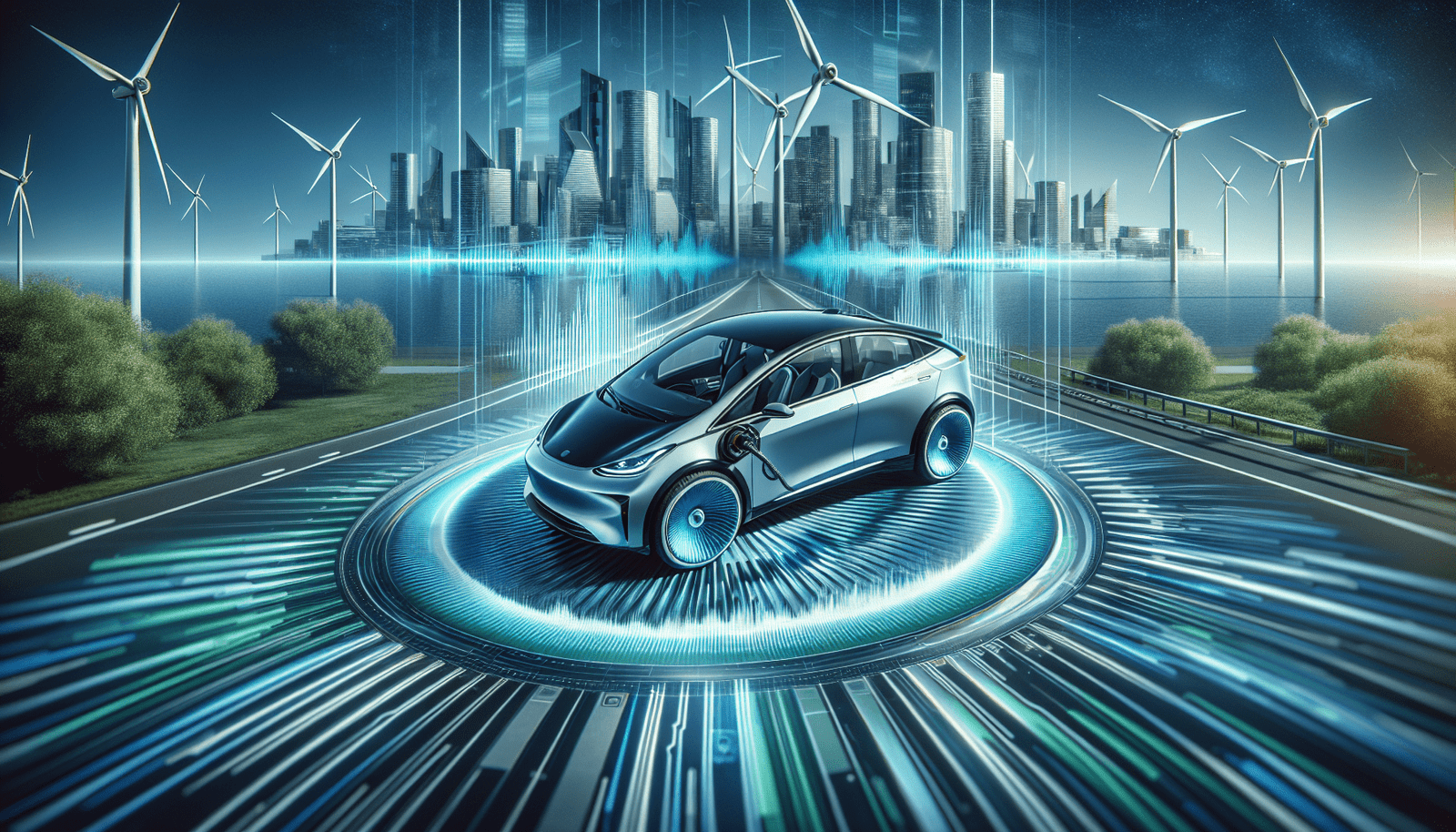Have you ever wondered about the sound and noise control in electric vehicles? With the rising popularity of electric cars, manufacturers have been focusing on innovative ways to enhance the auditory experience for drivers and pedestrians alike. From futuristic artificial engine sounds to advanced noise-cancelling technology, this article explores the latest innovations in electric vehicle sound and noise control, shedding light on how these developments can contribute to a safer and more enjoyable driving experience for all.

Advancements in Electric Vehicle Sound and Noise Control
Electric vehicles (EVs) have gained popularity in recent years due to their environmental friendliness and cost-saving benefits. However, one concern for potential EV owners is the lack of traditional engine noise, which can affect the overall driving experience and safety considerations for pedestrians. Thankfully, advancements in electric vehicle sound and noise control have addressed these concerns, providing innovative solutions to enhance the auditory experience of EVs.
Active Noise Control Systems
Active Noise Control (ANC) systems have revolutionized the way we perceive sound in electric vehicles. These systems work by using advanced technology to generate sound waves that cancel out unwanted noise. By analyzing the incoming noise and creating anti-noise signals, ANC effectively minimizes undesirable sounds such as road noise, wind noise, and motor vibrations.
The key advantage of ANC in electric vehicles is the ability to create a quieter and more comfortable cabin environment. By actively reducing external noise, ANC ensures a serene driving experience, making it easier for passengers to engage in conversations or enjoy the in-cabin entertainment system. Furthermore, a quieter cabin allows drivers to stay focused and alert, enhancing safety on the road.
Sound Design
Sound design plays a crucial role in electric vehicles, as it helps bridge the gap between the quiet operation of an electric motor and the expectations of drivers and pedestrians. To ensure a pleasant and immersive sound experience, automakers have started incorporating synthesized vehicle sounds that not only mimic the sound of internal combustion engines but also create a unique identity for each electric vehicle.
Importance of Sound Design in Electric Vehicles
Sound design is of paramount importance in electric vehicles as it contributes to the overall perception and branding of EVs. Without proper sound design, EVs might be perceived as lacking power or character. By carefully designing the sound emitted by the vehicle, automakers can create a more engaging and exhilarating driving experience, instilling confidence in the driver and making EVs more appealing to potential buyers.
Designing Pleasant Vehicle Sounds
Creating pleasant vehicle sounds involves striking a balance between authenticity and innovation. While the sound of an EV should be distinct and reflective of its sustainable nature, it should also be pleasing to the ears of both the driver and pedestrians. Automakers conduct extensive research to understand preferences and expectations, designing sounds that are not only harmonious but also provide important auditory cues for pedestrians to identify the presence of an approaching vehicle.
External Noise Generation
While it is crucial to reduce noise inside the cabin, electric vehicles also need to generate external noise for pedestrian safety. As EVs are almost silent at low speeds, there is a need to ensure that pedestrians are aware of their presence, especially in urban areas where sound is an essential cue for pedestrians.
Legal Requirements for External Noise Generation
To address this safety concern, regulatory bodies around the world have introduced legal requirements for external noise generation in electric vehicles. For instance, the United States mandates that all new hybrid and electric vehicles be equipped with an Acoustic Vehicle Alert System (AVAS) to emit sound when operating at speeds below 19 mph. These regulations ensure that pedestrians can identify and anticipate the movement of electric vehicles, reducing the risk of accidents.
Sound Generation Techniques
Automakers utilize various sound generation techniques to create external noise in electric vehicles. These techniques include using speakers or sound emitters strategically placed around the vehicle. The emitted sound is carefully calibrated to be audible, yet not intrusive, ensuring that it effectively alerts pedestrians without causing unnecessary noise pollution. In some cases, vehicles may also generate external noise based on real-time data, adapting the sound profile to the vehicle’s speed and environment.
Artificial Engine Sounds
Simulating Internal Combustion Engine Sounds
As electric vehicles become more prominent, many drivers still crave the familiar sound of an internal combustion engine. To bridge this gap, automakers have introduced artificial engine sounds, which replicate the sound of a traditional gasoline-powered vehicle. These sounds are generated using onboard speakers or sound-emitting devices, providing an acoustic experience similar to that of a conventional car.
Customizable Engine Sounds
A unique feature of artificial engine sounds is the ability to customize them according to driver preferences. Some electric vehicles offer options to select different engine sound profiles, allowing drivers to choose a sound that aligns with their personality or mood. Whether it’s a sporty rumble or a sophisticated hum, customizable engine sounds add a personal touch to the driving experience, further enhancing the connection between driver and vehicle.
Pedestrian Warning Systems
Types of Pedestrian Warning Systems
Pedestrian warning systems are essential to ensure the safety of people walking near electric vehicles. These systems utilize sound technology to alert pedestrians about the presence and movements of EVs. One common type of pedestrian warning system is the Acoustic Vehicle Alert System (AVAS), which emits sound to notify pedestrians when the vehicle is in motion at low speeds.
In addition to AVAS, some electric vehicles are equipped with advanced pedestrian detection systems that use sensors and cameras to identify pedestrians, providing visual and auditory warnings to both the driver and pedestrians of any potential collision risks.
Communication through Sound
Pedestrian warning systems not only serve as a safety feature but also provide an opportunity for electric vehicles to communicate with their surroundings. Apart from emitting basic warning sounds, future innovations in pedestrian warning systems may allow for more advanced communication, such as indicating the intention to stop or turn. These auditory cues will help pedestrians anticipate the actions of electric vehicles and promote safer interactions between vehicles and pedestrians.
In-Cabin Sound Experience
Enhancing In-Cabin Sound Quality
While reducing external noise is a priority in electric vehicles, providing a pleasant in-cabin sound experience is equally important. Advanced sound systems and acoustic treatments are employed to enhance the audio quality within the vehicle. By implementing noise-cancellation technologies, automakers can create an environment where only desired sounds are heard, ensuring optimal audio experience for passengers.
Personalized Soundscapes
In-cabin sound experience can be further personalized through the introduction of customizable soundscapes. These soundscapes allow drivers to choose from a range of audio themes to create a unique ambiance inside the vehicle. Whether it’s the sound of a natural environment or soothing melodies, personalized soundscapes offer a customizable feature that caters to individual preferences and enhances the overall driving experience.
Sound System Technology
Advanced Speakers and Amplifiers
To deliver high-quality sound in electric vehicles, automakers employ advanced speaker and amplifier technologies. These technologies focus on achieving a well-balanced audio output across different frequencies, ensuring clarity and richness in sound reproduction. Additionally, innovative speaker placements take into account the vehicle’s interior design to optimize sound dispersion, creating an immersive audio experience for passengers.
Active Sound Management
To address the unique sound characteristics of electric vehicles, active sound management systems are utilized. These systems actively monitor various factors such as vehicle speed, road conditions, and cabin noise levels to dynamically adjust the audio output. With active sound management, automakers can create a consistent audio experience, compensating for variations in external noise and vehicle dynamics, thereby ensuring a pleasant sound environment inside the cabin.
Future Innovations
Virtual Reality Soundscapes
Future innovations in electric vehicle sound and noise control may include virtual reality soundscapes. This technology aims to provide a more immersive auditory experience for occupants by simulating realistic sound environments. From replicating the sound of a bustling city street to transporting passengers to a tranquil natural setting, virtual reality soundscapes can enhance the overall driving experience, making it more engaging and enjoyable.
Adaptive Noise Canceling
Adaptive noise-canceling systems represent another area of potential future innovation. By continuously monitoring and analyzing external noise sources, these systems can dynamically adjust the ANC to provide optimal noise cancellation in real-time. This ensures that the cabin remains quiet and serene, regardless of the driving conditions or changes in the surrounding environment.
Bioacoustics Research
Advancements in bioacoustics research may also contribute to the evolution of electric vehicle sound and noise control. Bioacoustics focuses on understanding the sounds produced by various organisms, including humans. By studying the psychoacoustic responses of individuals to different sound stimuli, researchers can refine and optimize the sounds emitted by electric vehicles, ensuring they align with human preferences and perception.

Conclusion
Advancements in electric vehicle sound and noise control have significantly transformed the way we perceive and experience electric vehicles. With active noise control systems, innovative sound design, external noise generation techniques, artificial engine sounds, and pedestrian warning systems, electric vehicles are no longer limited by their silent nature. The in-cabin sound experience is enhanced through advanced sound system technology and personalized soundscapes. As we look towards the future, virtual reality soundscapes, adaptive noise canceling, and bioacoustics research hold immense potential to revolutionize the auditory experience of electric vehicles even further. These innovations underline the commitment of automakers to create safe, enjoyable, and engaging electric vehicle environments for both drivers and pedestrians alike.

